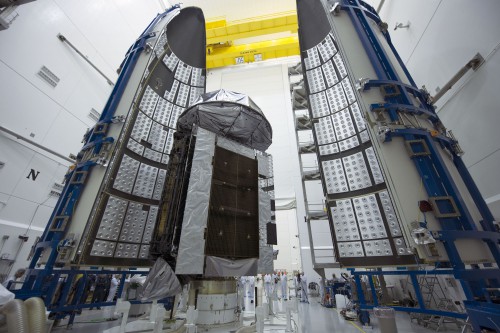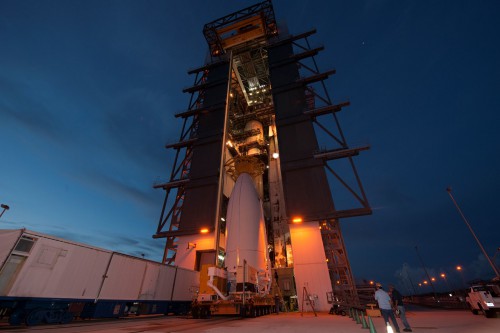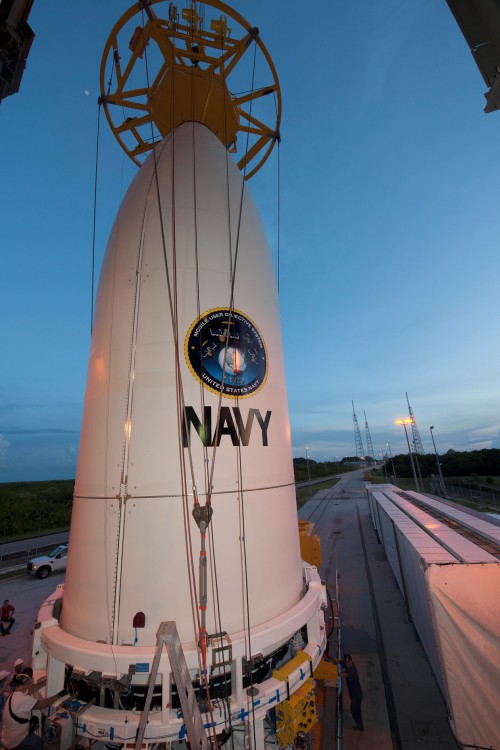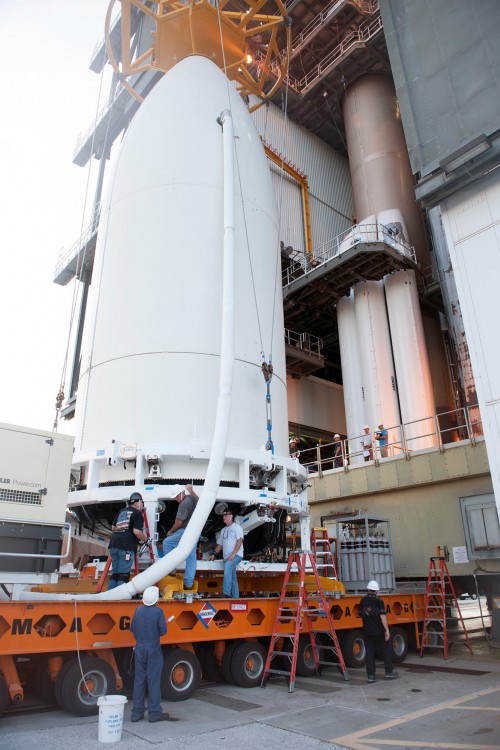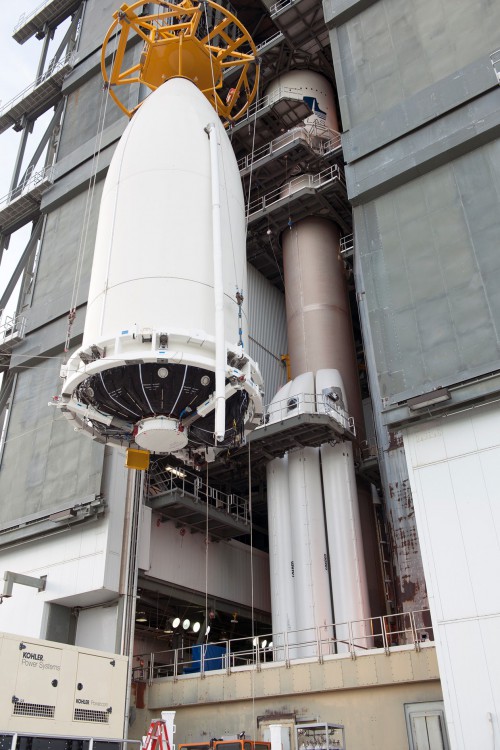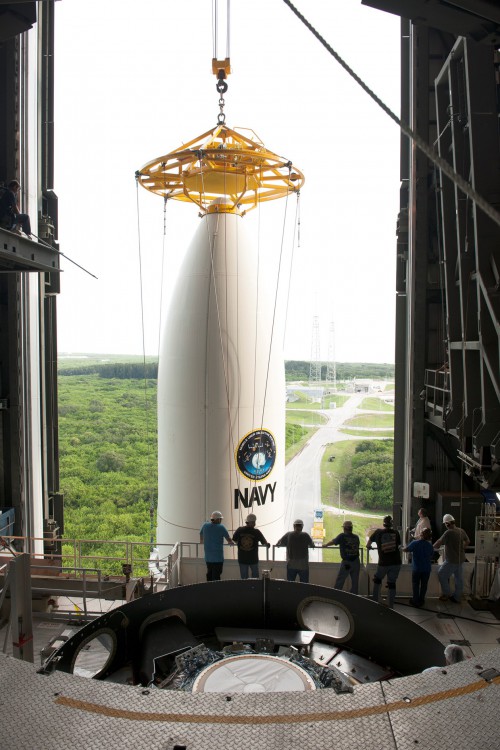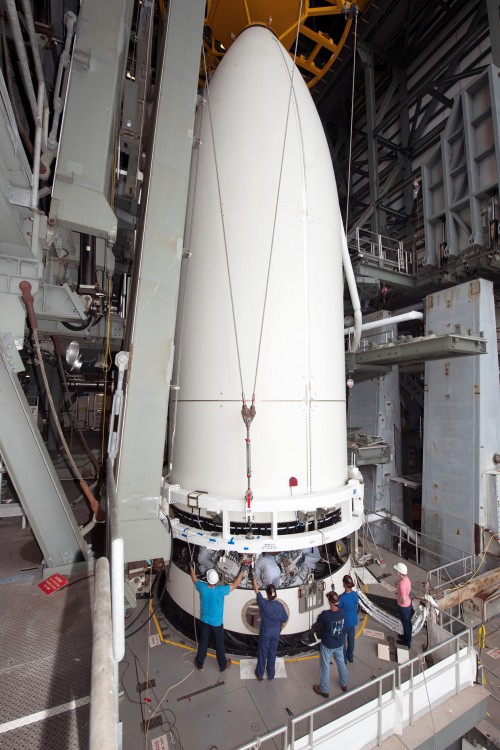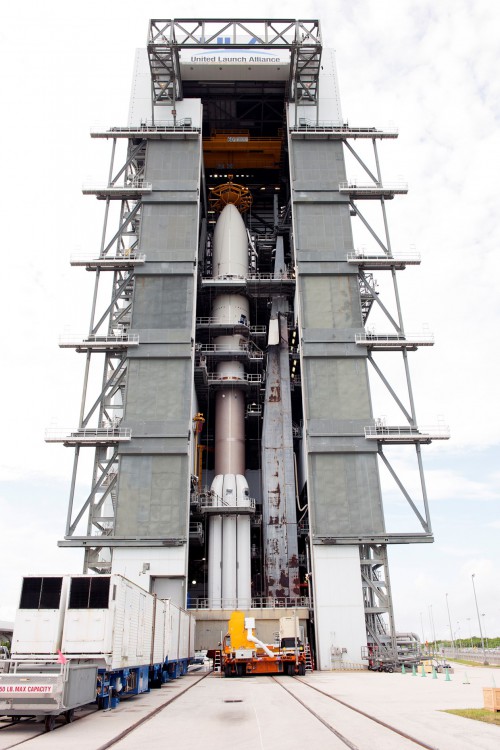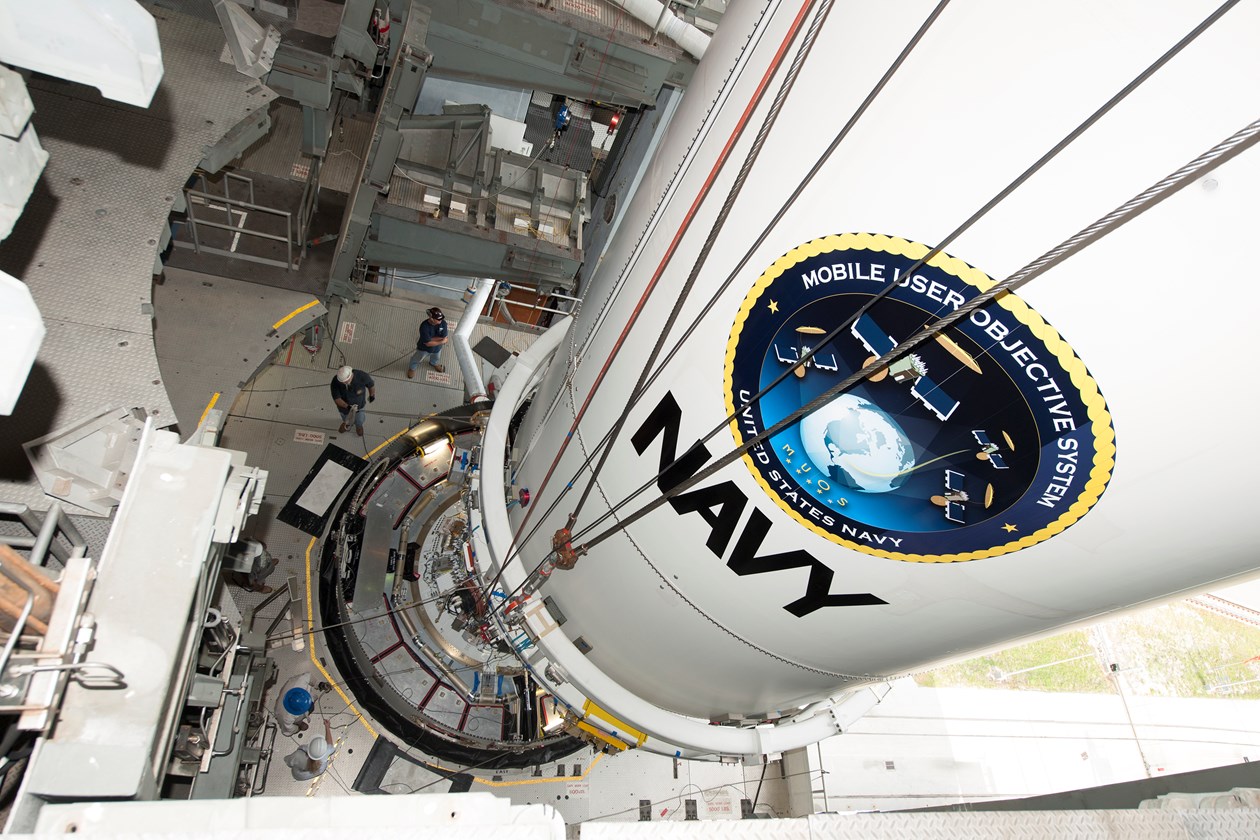
The fourth in a Lockheed Martin-built, five-ship fleet for a next-generation, narrowband tactical military satellite communications system is now stacked atop its 206-foot-tall United Launch Alliance (ULA) Atlas-V rocket for an early morning twilight liftoff attempt from Cape Canaveral Air Force Station, Fla. next Monday.
The U.S. Navy’s flight-ready 15,000 pound Mobile User Objective System-4 (MUOS-4) satellite, encapsulated in its 5.4-meter (17.7-foot) bullet-like payload fairing, was transported from Astrotech Space Operations (where it had undergone final testing and preparations for flight) to the Atlas Vertical Integration Facility (VIF) at Space Launch Complex-41 (SLC-41) on the morning of Aug. 19.

The enormous military satellite was then hoisted vertical and integrated to its Atlas booster, which will fly in its most powerful “heavyweight” variant (551 configuration) to deliver the enormous 7.5 ton MUOS-4 to a 22,000-mile-high geosynchronous orbit.
The added power of five strap-on solid rocket boosters (supplied by Aerojet Rocketdyne) will compliment the Atlas-V to get MUOS-4 into space, something that the rocket has only done previously on five of its 55 flights over the last 13 years since its inaugural launch.
Three of those flights were the first three MUOS satellites. The other two were both for NASA spacecraft to worlds in the outer Solar System: New Horizons to Pluto in 2006 and JUNO to Jupiter in 2011.
MUOS operates like a “smart phone cell tower in the sky,” giving military users more communications capability over existing systems, including simultaneous voice, video, and data—similar to today’s capabilities with smart phones and providing users with 10 times more communications capacity.
“Delivery of this fourth satellite for the U.S. Navy completes the initial MUOS constellation and provides near-global coverage for the network,” said Iris Bombelyn, vice president of Narrowband Communications at Lockheed Martin. “For our mobile forces, that means for the first time they will be able to have secure, high-fidelity voice conversations, networked team calls and data exchange, including video, with anyone around the world connected with a MUOS terminal.”
The MUOS satellites represent the heaviest payloads ever to be launched by ULA’s Atlas-V.
Final integrated testing and closeout preparations for launch are underway. The rocket, topped off with MUOS-4, will be rolled out from the VIF to nearby launch pad-41 on Friday, Aug. 28.
Launch is scheduled for Aug. 31 during a window from 6:07 a.m. to 6:51 a.m. EDT; sunrise will occur at 7:00 a.m.
Bookmark our MUOS-4 Launch Tracker for updates and live coverage on launch day.
Video Credit: ULA
Photos Credit: ULA
Video Credit: AmericaSpace
Be sure to “Like” AmericaSpace on Facebook and follow us on Twitter: @AmericaSpace
Missions » MUOS » Missions » MUOS » MUOS-4 »




